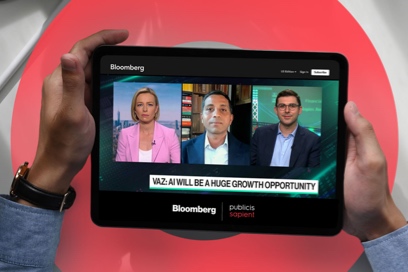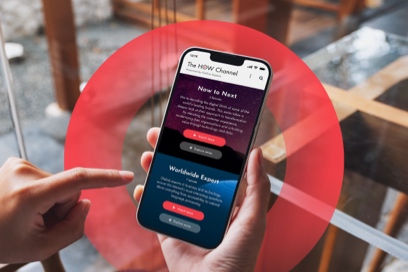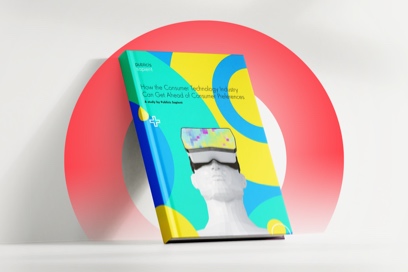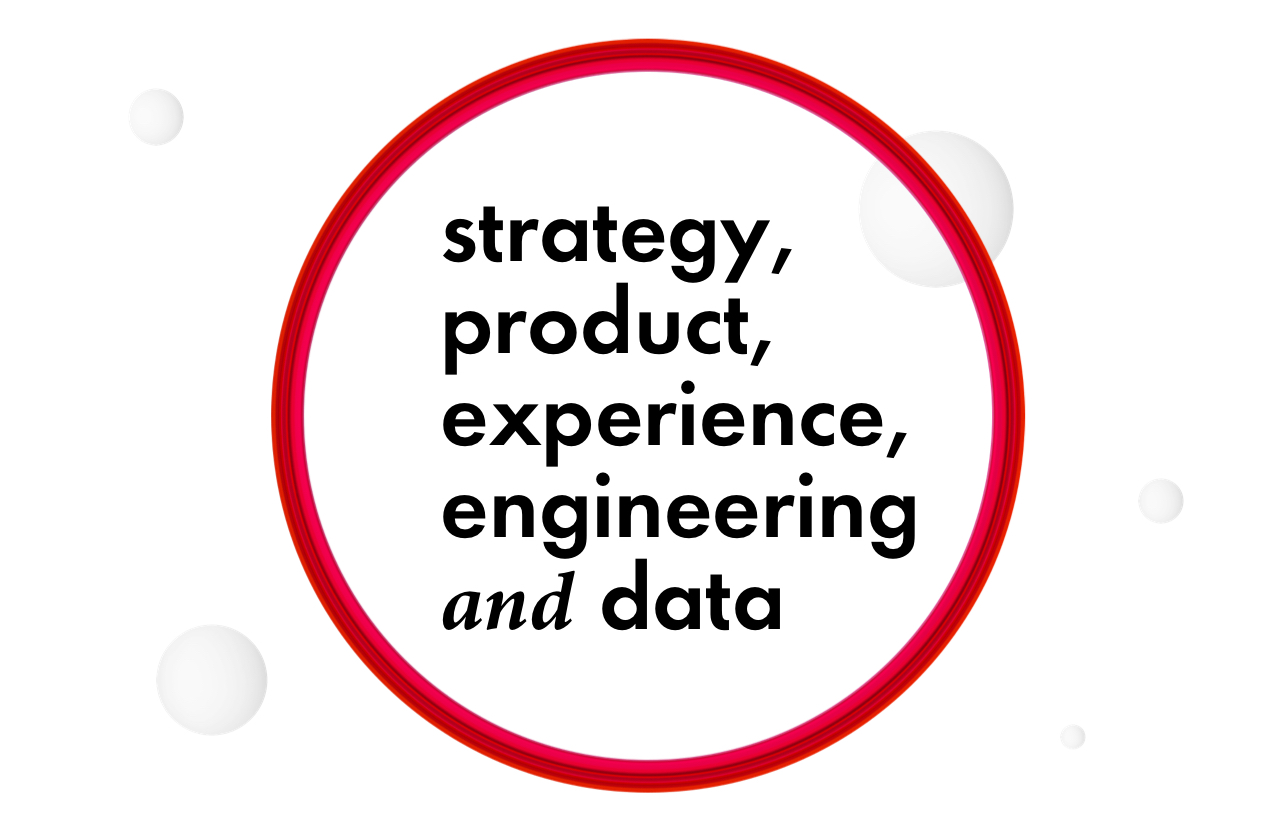

As Chief Product Officer, Sheldon Monteiro helps Publicis Sapient clients move from a project-driven model to a product-driven one. As the “P” (“Product”) in the SPEED capabilities (learn more about the five essential SPEED capabilities), his team plays a core role in the virtuous cycle that keeps businesses ever-relevant with their customers.
His team helps established companies think about how to get the most customer and business value through enterprise agility and mastering largescale digital transformation through a product shift. They help clients build their own internal teams to continuously analyze and come up with new ways to create that value.
Here, we talked with Monteiro about how Publicis Sapient's data-informed work is essential for clients now more than ever.
What has changed in the world? How are our clients affected, as a result?

#1
We have Moore’s Law—the observation that the number of transistors in a dense integrated circuit doubles about every two years. While Gordon Moore made his prediction in the 70s, more recently, Ray Kurzweil at Singularity University tracked and plotted the price-performance of computing over the past 120 years. Apparently,the doubling in the price performance ratio of technology has been happening for literally that entire period.
Now, we have reached this stage where because of this exponential doubling every 18 to 36 months, the things that are possible with technology today were science fiction a decade ago. Yes, the rate of change is getting faster, and it is a direct result of exponential improvements in technology.
Yes, the rate of change is getting faster, and it is a direct result of exponential improvements in technology.
#2
It has become increasingly difficult to predict the way that we as humans will actually relate to these new technological innovations. You look at for instance, in 2006, our moms would tell us to never get in a stranger’s car, and to not talk to strangers on the Internet. Now we use the Internet to find strangers and get in their cars. That shift in human behaviors and expectations was impossible to predict.
“…in 2006, our moms would tell us to never get in a stranger’s car, and to not talk to strangers on the Internet. Now we use the Internet to find strangers and get in their cars.”
For our clients and their businesses, they have to deal with the reality that technology is extremely disruptive because the price-performance is improving so fast and human behavior is hard to predict. These two factors contribute to disruption.
So the value of speed has increased substantially. How do you get ideas into market as quickly as possible? How do you pivot when you realize your guess around how customers would react is not exactly correct? To really orient around customer behavior, how do you do all of these things?
But most businesses aren’t geared for that. Most are geared for a world in which change has been much slower and more episodic.
"Most are geared for a world in which change has been much slower and more episodic."
So, how can businesses pivot?

If you think about the way businesses would work, they would develop long-range plans, typically measured in years. Today, that’s no longer sufficient because you’ve got to be able to pivot your plans on a dime, based upon what you see happening in response to competitor models, customer behavior, etc. That’s a long way of saying that the way in which our clients need to deal with change has had to radically be rethought. That is essentially what our Publicis Sapient HOW does. It helps our client to really figure out how to unlock customer value and business value, and do that in a way that is not episodic but continuous.
“…the way in which our clients need to deal with change has had to radically be rethought. That is essentially what our Publicis Sapient HOW does.”
Think about the way we used to manage projects. Every project manager would manage three variables: time, scope and cost. How long will something take to do? What is it that we’re doing? Tell me exactly what the requirements are, which is the scope. How much is this going to cost? Project managers have had this trifecta drilled into them from the time they started their careers. But in this world in which change is continuous, that management system is not working well. The reason is quite simple.
When you think about trying to nail down what it is that you have to build, scope, essentially you do a lot of analysis up front. You do a lot of analysis that you might never use. By the time you actually get to building all of the things you thought you needed to build, the world has changed around you or customer expectations have changed.
“Think about the way we used to manage projects. Every project manager would manage three variables: time, scope and cost…. But in this world in which change is continuous, that management system is not working well.”
When you think about time, any good project manager worth her salt is going to add buffer, which actually makes you slow because the project expands in size to fill all that available buffer. And same with cost, we tend to add buffer to the budgets and all of that buffer is consumed, as Parkinson predicted.
So what if instead of focusing on time, scope and cost, we focus on speed—how fast can we go from an idea all the way to putting it into the world—into business and into customer’s hands? How can we do that with quality so that whenever we do that, we are not breaking things? In addition, how do we make sure we’re not just completing the scope but delivering the value to the customers and to the business?
When you make this shift to speed, quality and value, you gain the ability to move at the speed of disruptive change in the face of uncertainty. Shifting the steering system from time, scope and cost to speed, quality and value is easy to say, it’s not that easy to do. This shift is the essence of what we’ve engineered into our HOW. We help our clients go from ideals around transformation all the way to delivering transformation at scale with this new steering system.
“Shifting the steering system from time, scope and cost to speed, quality and value is easy to say. It’s not that easy to do. This shift is the essence of what we’ve engineered into our HOW.”
The Backwards Brain

Sheldon Monteiro, the Chief Product Officer at Publicis Sapient, uses this video, 'The Backwards Brain,' to illustrate his views on how difficult organizational change can be. 'When you have an organization that is entrenched in this behavior of managing in terms of time, scope and cost...it takes quite a bit in order to make the behavior change happen,' he says.
How is our HOW dataful?

When you shift a steering system, it’s pretty involved. There is a video on YouTube and TED Talks called “The Backwards Brain Bicycle.”
It’s about unlearning things that you already know. In that video, host Destin Sandlin’s friends rewired a bicycle so that when you turn the handlebars left, the bicycle actually turns toward the right, and when you turn right, it turns toward the left. The similarity here is that you’ve changed the steering system. You know exactly what’s changed—you see it right in front of you. Yet he finds it impossible to ride this bicycle and it takes him eight months to master the modified bike after a series of trial and error and experimentation to try to rewire his brain.
When you have an organization that is entrenched in this behavior of managing in terms of time, scope and cost, which is the way we have managed our organizations for the last 50 years, and you suddenly say, “Be like Amazon and manage speed, quality and value,” you might know the theory, but it takes quite a bit in order to make the behavior change happens.
“The key to making the change is understanding and democratizing visibility into the key metrics associated with this new steering system.”
What does it mean to be fast?

Most organizations that have adopted agile within IT already know how to measure cycle time for their IT departments to implement change once that change is defined. However, what does it mean when we talk about going from ideas to live? Is it just about measuring how quickly your agile teams are taking items that have been given to them by the business and turning that into working software? Or does it start right at the point where ideas for new value creation are being generated, how fast those are tested with no-regrets experiments and finally built? The speed and effectiveness of this cycle is what you have to measure with speed..
When we talk about quality, what are we measuring?
Are we simply measuring defects in the software-development process as many companies do? Are we measuring how effective the experiences we design are, or the strategies that we come up with in the C-suite?
How do you change the notion of how you are measuring value?
Not just in terms of internal proxies but value as defined by the customer and shareholder. How do you switch the orientation from internal outputs to external outcomes?
You can only do that if you develop a measurement system and you have all of the people who are involved in the product development process focus on the same set of measures and now change their behaviors and response to this new metric system. You can’t manage what you don’t measure.
How does an organization build a strong metric system?
It becomes super critical to not just measure how products do in the market, but actually measure how work is done all the way from ideas, through all the intermediate steps or backlogs, until it shows up as features for your customers. You need metrics that shine a light on each of these activities and how fast and effectively work flows within the system that is your organization. These metrics need to be visible across the organization from the senior-most executives to people in every part of the organization involved in any aspect of change.
Implementing these metrics is in essence how we become dataful. Said another way, being dataful is not just about instrumenting the products and experiences we help our clients create, but also instrumenting work itself.
“It becomes super critical to not just measure how products do in the market, but actually measure how work is done.”
Former Publicis Sapient CTO John Maeda talked about the LEAD framework. In that framework, he proposes that great experiences exhibit four essential qualities—Light, Ethical, Accessible and Dataful.

What is phenomenal about the framework is it really measures beautifully the effectiveness of the products we create, and also scales well to how we work. We can measure our ways of working and democratize these with metrics dashboards. Everyone from people who are working on the nuts and bolts of inventing and building these journeys and experiences through to executive management -- knows how we are progressing along LEAD metrics. By making work visible and measurable, it allows everyone to improve and know how to ride this new bicycle.
Our PS HOW packages all this into methods and tools for rapid change. Our HOW is our recipe for digital business transformation. It enables the shifts our clients must make to connect customer value to business strategy, experience to brand. It moves clients’ steering systems from episodic projects that optimize time, scope and cost to lean product thinking that emphasizes speed, quality and value. With our PS HOW, your business will have the tools and capabilities to make itself ever-relevant.
-
![]()
Customer Experience and Design
How to Develop Your Business’ Muscle for Continuous Change
Experience is one of five capabilities that businesses need to prioritize if they want to undergo digital transformation.
-
![]()
Customer Experience and Design
Below the Glass: What Most Companies Don’t Realize About Customer Experience
Experience isn’t just about what’s on the screen, but what customers will never see. It involves anything and everything that affects a customer’s interactions with a brand.
-
![]()
Customer Experience and Design
Timely Trumps Timeless When Designing for Today’s Customers
Amid rapid change, businesses need to embrace modern design principles that emphasize speed and iteration.

Digital Business Transformation Newsletter
Subscribe to exclusive transformation-focused trends and insights.











